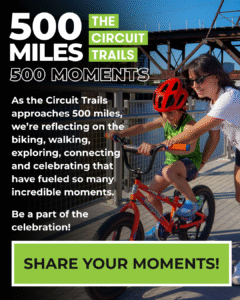Build it and they will come: Circuit Trails are connecting to the future
Authored By: The Circuit Trails | April 13, 2016
The nineteenth century welcomed the advent of a railroad system with pioneers like Lewis and Clark fearlessly leading the way by connecting the east to the uncharted western frontier. Its transformative impact is reflected in the many books and movies created since then. Similarly in the twentieth century we saw the consolidation of rail lines but also embraced the addition of a highway system that further connected communities. Now in the 21st century, a new group of pioneers are still striving to connect the community, by establishing a 750-mile network of trails and greenways that will allow millions to have access to trails within a mile from their front door (for more information, see the article, “Circuit Trails: Sparking a New Era of Health, Community Building and Stewardship,” in the spring edition of Rails-to-Trails Magazine).
On April 15th, the Circuit Coalition will soon make the cohesion even stronger by launching a new website that makes accessing the Circuit trails is even easier. Links to the more popular trails like the Schuylkill River Trail or the more remote areas like the Wissahickon Valley Park, Bartram’s Garden and the Pennypack Trail are available. Viewers will also be able to stay up to date on the latest events and trail progress.
The Circuit Trails idea, led by ingenious strategy, tireless commitment and generous funding, has come to fruition, and now we’re shouting that out from the rooftops. Now more than 300 miles strong, the Circuit Trails are continuing to change the face, utility and economics of the landscapes in New Jersey and Pennsylvania. For example, the popular 135-mile Schuylkill River Trail, which is surrounded by a river on the east, a dog park on the west and flanked by a bridge and a park, meets the needs of many. To a transcendentalist, it is a dream. To a realist, it meets all practical needs, and to a humanitarian, it feeds the soul of others and serves as a conduit for the underserved neighborhoods.
The consortium involved in this project has been vigilant in connecting communities and bolstering parks and waterways, and on April 15 their efforts will be celebrated with an event at Race Street Pier on the Delaware River Waterfront in Philadelphia. Standing in the shadow of the Benjamin Franklin Bridge, the two-level Pier is the perfect venue to celebrate the creation of a new way for people to enjoy their community. The event, which for cyclists begins at 10:15 a.m. at the southeast corner of Franklin Square Park where t-shirts will be distributed, will welcome local public officials, Philadelphia Eagles’ Connor Barwin, supporters and cyclist enthusiasts ringing in the new trail season and highlighting all that is good about the Circuit Trails…needless to say, that should take a while so bring your bike and prepare to enjoy yourself.
Circuit Trails Coalition Co-Founder and Bicycle Coalition Executive Director Sarah Clark Stuart will kick off the event with some opening remarks and a recognition of the cyclists who make the round trip across the Ben Franklin Bridge, the historic span that links New Jersey and Pennsylvania and serves as a symbol of the solidarity of this project. Following other brief remarks from the William Penn Foundation and the City of Philadelphia, Stuart will be joined by others the Circuit Coalition co-chairs Patrick Starr and Olivia Glenn to unveil the new look of the Circuit Trails.
The season’s launch will be followed by a weekend of events throughout New Jersey and Pennsylvania. Local events can be found on circuittrails.org.
Those associated with the growth of the Circuit Trails have remained sensitive to the diversity of populations that they are serving, and it shows. From the urban areas of the fifth largest metropolitan area of the U.S., Philadelphia, to the rural areas of Bucks County, people are working together to strengthen their communities.
The Circuit Trails are revolutionizing the way we think about our community, by providing vital open spaces where people can recreate safely, visit places they love and, perhaps, discover new places they’ve never ventured.


